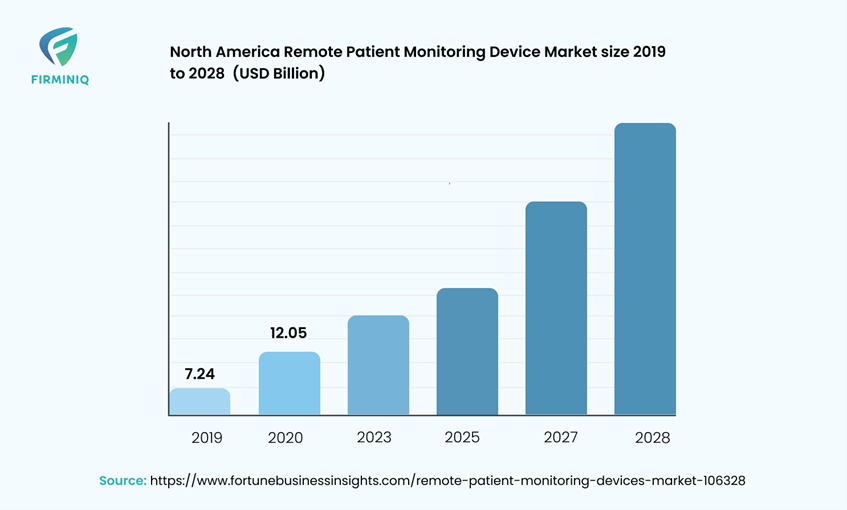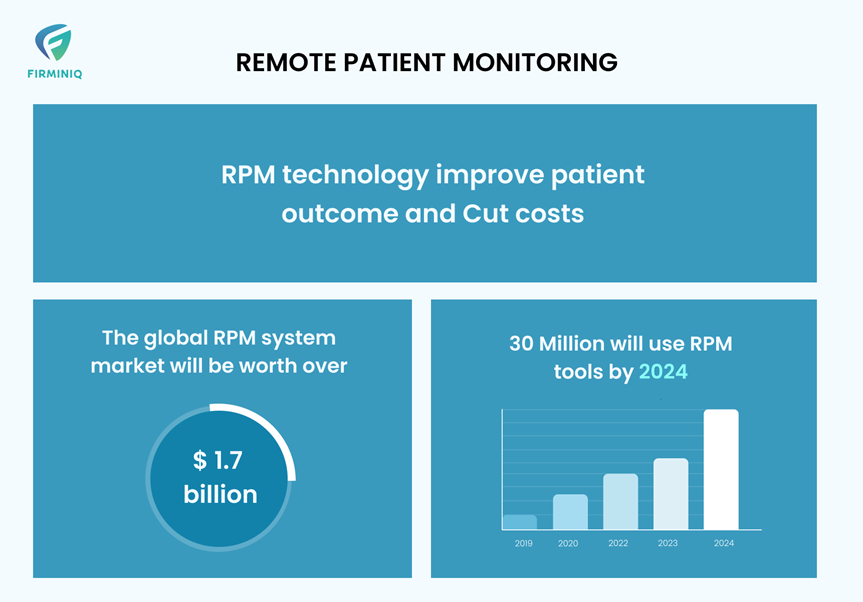The pandemic pushed the healthcare system towards digitalization and transformed patient care. One such transformation is Remote Patient Monitoring which has shifted the healthcare model to being home centered.
From wristbands to wearable sensors and other Bluetooth-enabled connected devices, these remote patient monitoring tools allow patients to seamlessly collect data with shared access to the clinics and health experts. The drastic push towards the RPM (Remote Patient Monitoring) benefits both patients and the healthcare experts and continues to improve the entire healthcare ecosystem.
The market for the RPM took a sharp incline during the pandemic, owing to the social distancing norms. As per research, global remote patient monitoring was valued at $1.9 billion in 2021 and is expected to reach $8.5 billion by 2031. There will be a 16.3% rise in the CAGR till 2031.
Paying attention to the current trends and their popularity, it becomes vital to understand the crucial considerations for the remote patient monitoring implementation, its benefits, challenges faced, solutions and more. Let us explore and understand how RPM is shaping healthcare!
What Exactly Does Remote Patient Monitoring Mean?
Remote patient monitoring infuses the use of medical devices and equipment that gather and analyze the patient’s physiological data and offer an efficient treatment for the patients suffering from chronic and other acute illnesses.
With remote patient monitoring, the patients will get continuous assistance from the healthcare experts with the comfort of staying at home. As it is known to facilitate the remote interaction between the patient and the doctor in real-time, the healthcare ecosystem is leveraging the benefits and the enhanced outcomes. Let us quickly go through the statistics and monitor the market size for the RPM.
mage Source


Some Popular Use Cases for Remote Patient Monitoring
Remote patient monitoring is becoming mainstream with the rapid improvements in technology. RPM in the frame of medical wearable or other devices helps improve patient life and reduces the cost and expenses for patient care. Here are some of the ways in which RPM continues to transform healthcare.
1. Continuous Patient Monitoring at Home
Remote patient monitoring bridges the barrier of data while allowing patients to access their health data. It provides patients with a better understanding of their health conditions so that they can bring necessary changes in their lifestyles and lead a better life. Patients suffering from a myriad of conditions including diabetics, blood pressure, COVID and others can leverage RPM for continuous monitoring and tracking.
At FIRMINIQ, we developed a Connected Health Mobile App Solution to support wrist blood pressure watch successfully that supported all the blood pressure monitoring features and kept users informed of their health conditions.
2. Doctor can Monitor Readings Regularly

Gone are the conventional days when doctors could only monitor the patient’s readings during clinic visits. With the implementation of Remote Patient Monitoring, doctors could regularly monitor their patients and keep track of their vitals.
RPM allows the collection and sharing of biometric data and patient report insights with physicians, making evaluations easy. With these devices, patients are efficiently able to manage their chronic conditions and doctors are notified of higher readings while analyzing the need for intervention. Patients can discuss their concerns in the comfort of their homes with their physicians.
For example, if the patient has a blood pressure condition, both doctor and patient can have better control of the condition. With the wrist band the patient readings are automatically updated and displayed to the doctor over the entire course.
3. Reduced Emergency Visits
With the RPM devices in place, it is easier for the physician to intervene in the patient’s condition early, especially for serious and critical or time-sensitive health-related issues. It may mean the difference between life and death. As per the CDC, 6 out of 10 individuals suffer from a chronic disease (heart disease, cancer, COPD, diabetes) and it is the leading cause of death. Simultaneously tracking the patient results in unplanned hospital visits also brings down the death rate.
4. Insurance
The emergencies and hospital readmissions are reduced to a great extent that helps insurance companies to save money and allow doctors in better monitoring and managing their high-risk patients.
5. Improves Overall Health Conditions
As per a study released by the WebCareHealth, around 60% of the healthcare C-suites and leaders consider RPM to be a new standard of patient care.
With continuous improvement and technological advancements, physicians and healthcare professionals can help patients with better and holistic understanding while allowing data to be delivered continually to the experts.
For example, if you are suffering from a heart condition, your physician will recommend an electrocardiogram, also called EKG, that allows patients to monitor their heart health at home and doctor to track the readings.
The Future Holds Bright for Remote Patient Monitoring!
The healthcare businesses and clinicians are escalating the use of remote patient monitoring as it continues to evolve, and the future holds bright for the same. Well, it is no longer a trend, but has become a necessity for healthcare businesses to guard their services and bring more efficiency.
As these monitoring devices and mobile applications are bridging the gap between patient care and physicians while acting as a stimulator for futuristic innovation, it is time to leverage the benefits from the robust software vendor.
With expertise in developing remote patient monitoring platforms at FIRMINIQ, we can help you provide the best care for your patients. Reach out to us for more details about remote patient monitoring solutions we can build for your business to grow efficiently!
FAQs
1. What patient data is collected by Remote Patient Monitoring devices?
Remote patient monitoring devices collect a broad range of patient health data and associated information including blood pressure, vitals, heart rate, blood sugar levels, physical activity, weight management, calorie count, and more.
Remote patient monitoring includes a broad range of services that includes
- Efficiently manage chronic and other health conditions
- Reduced costs and the patient expenses
- Hospitalizations and readmissions in hospitals are reduced to an extent
- Patients are connected to the physicians remotely with round the clock availability.
- Reduced death rates as it allows the physician to track the patient’s health conditions on a prior basis, helping save their lives.
3. What technologies are required to streamline remote patient monitoring?
Simply a mobile device that can support the application for monitoring the device or equipment. The application can be downloaded from Google Play or App Store.
4. What is the cost of implementing Remote Patient Monitoring?
Remote patient monitoring saves the expenses of both hospitals and the patients while offering them devices to be used at home at a minimal cost and tracked by the physicians. So, the cost is much less than the hospital admissions!






